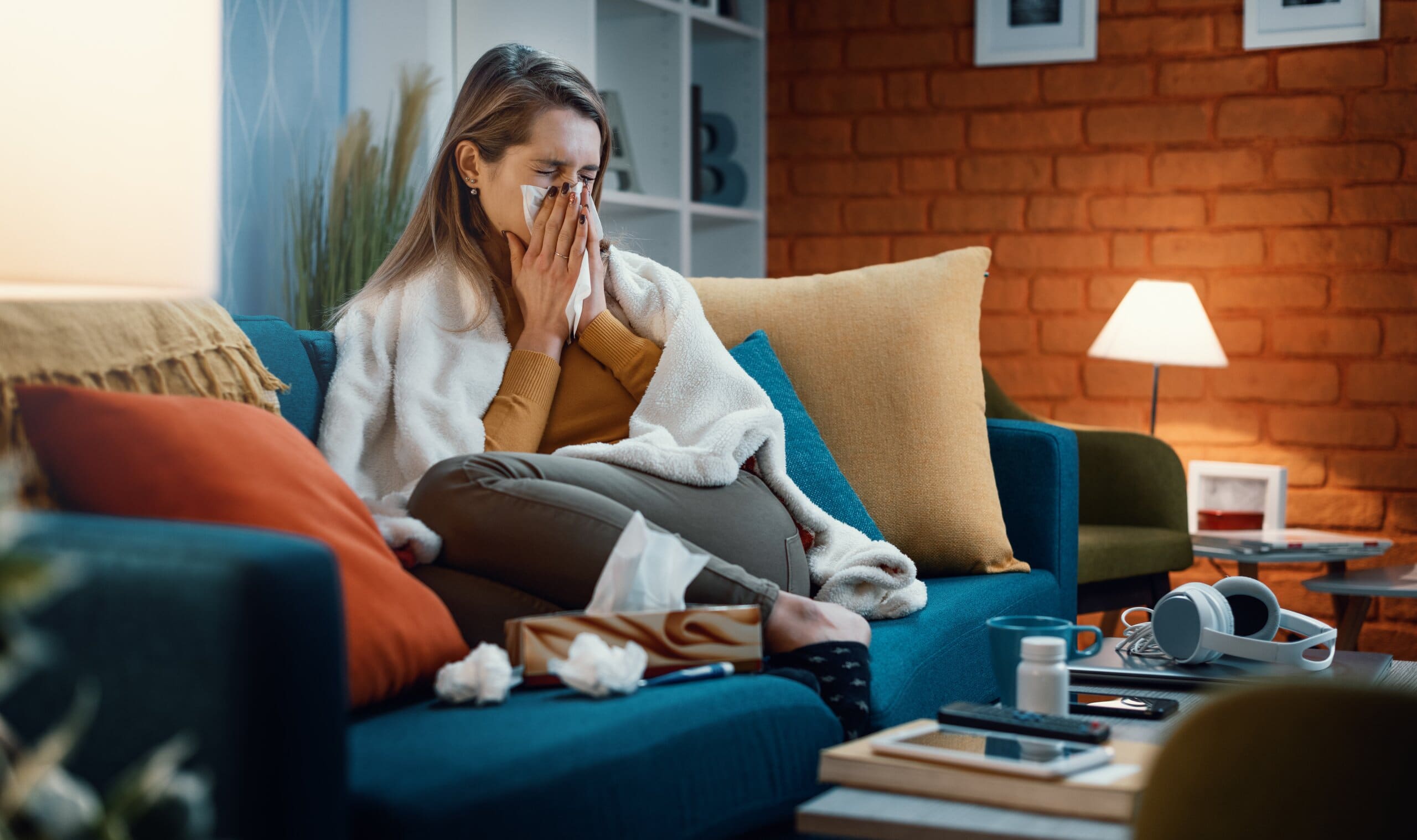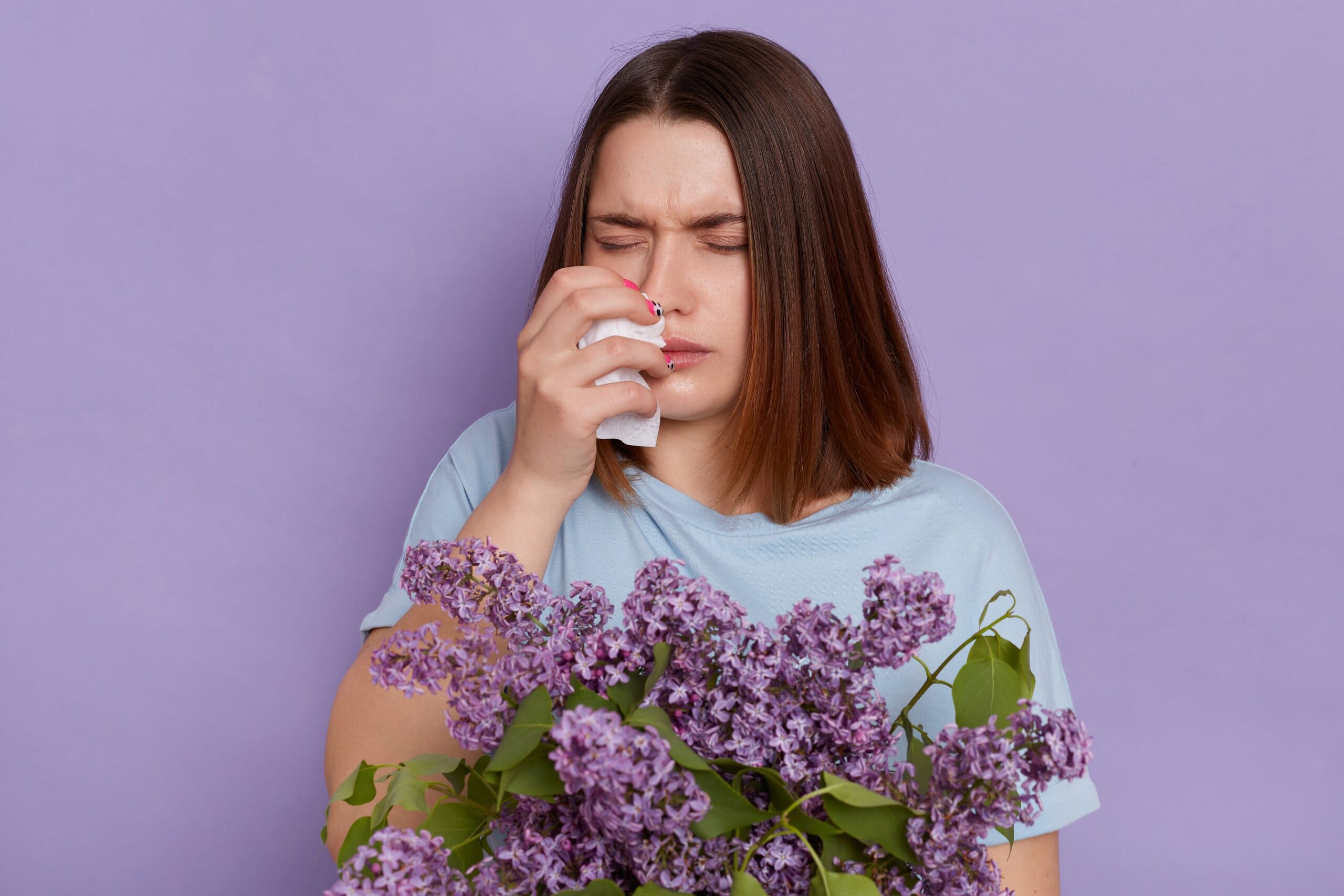Getting to sleep while suffering from hayfever and other seasonal allergies (also known as Allergic Rhinitis) can be a nightmare. While Spring comes with an array of beautiful flowers, sunnier weather and feelings of optimism, for 1 in 3 people in the UK, seasonal allergies have us struggling to appreciate this change in season.

Why are my allergies worse at night?
Did you know that simply lying down can make your allergy symptoms worse? The anatomy of your nose and throat means that while you’re horizontal, it’s harder for your body to let mucus and other nasty bodily fluids drip down. You’ll also find it harder to breathe, as your nose will stay blocked and it’ll be harder to clear your airways than when you’re upright.
But fear not - if you find that you’re struggling to breathe properly and simply can’t imagine being able to get to sleep with a head full of allergies, our Sleep Experts have discovered seven ways to combat nighttime sniffles.
1. Keep your head raised
Lying down, especially on your back, will worsen your congestion. Of course, if you’re trying to get to sleep, you generally need to be horizontal, however, you should try to raise your head as much as possible.
Mucus can’t travel down your throat when you’re flat, so try to layer your pillows higher than normal to keep your head elevated. This will help those fluids travel down your body, rather than keeping you blocked up and unable to breathe.
2. Keep pets out of your bedroom (and especially your bed!)
You might not be able to imagine saying no to sharing your bed with your pet - in fact, we’ve listed 6 ways sharing a bed with your dog can actually help you sleep - but when you’re suffering from hayfever and other allergies, it’s something to avoid.
As your immune system tries to tackle higher pollen counts and other seasonal allergy triggers, pet dander can make your symptoms even worse. While you might not share your bed with your pet, if they’ve been in your room at all during the day, their hair will likely cause you grief come nighttime.

3. Say goodbye to dust mites with a Spring Clean
Dust mites contain a protein that triggers allergic reactions when inhaled. And guess what? Your bedroom is full of them.
Dust mites are microscopic creatures that thrive on dead skin cells. Super hard to detect without a microscope, they live in the tiniest nooks and crannies of your room, so don’t feel guilty about not eradicating all traces of them entirely. They’re not harmful, but they will trigger allergic reactions and exacerbate your symptoms.
A Spring Clean will help keep them at bay, easing your allergies as a result. Keep on top of hoovering and dusting window sills and ledges, especially ones close to where you sleep.
4. Be extra vigilant with washing your bedding
The most effective way of eliminating dust mites is to wash your bedding regularly. Our Sleep Experts recommend you wash your sheets and duvet cover at least once a week, washing your pillow cases two to three times a week.
This might seem like a lot of laundry, but your bedding is a hotspot for dust mites as well as other triggering particles. Especially during spring and summer, you’ll want to be changing your bedding as often as possible to prevent the build up of any bacteria that will worsen your allergies.
Dust mites can particularly irritate your airways and eyes, so at least make sure your pillow cases are as clean as possible. Our article on how often to change your bedding will give you more tips and advice.
5. Eliminate pollen from your bedroom - and body
If you’re a regular hayfever-sufferer, it won’t be news to you that higher pollen counts mean higher chances of an allergic reaction.
Keeping your doors and windows completely closed will help to prevent pollen from entering your home and bedroom. It might be tempting to have the windows open on a warm Spring day, but you’re simply inviting irritants inside.
Martin Seeley, CEO and Sleep Expert at MattressNextDay, says:
Make your bedroom an anti-pollen zone, making sure the windows are kept shut at all times. Washing your bedding regularly will also help, and make sure to not wear clothes you’ve worn outside in the bed - this will simply transfer pollen and other allergens to your sheets.
Before bed, you can try making a homemade saline solution of saltwater, and rinsing your nose and throat with it. While unpleasant, this will rid your sinuses of microscopic pollen, physically flushing allergens out of your system, making it easier than if you were to try sleeping with a blocked nose.

6. Invest in a hypoallergenic mattress protector
A mattress protector will give you an added layer of protection against dust and dust mites. Your mattress can harbour bacteria that is hard to clean, but a mattress protector can easily be thrown in the washing machine to rid it of allergens.
Look out for hypoallergenic mattress protectors, as these are able to actively prevent the buildup of dirt. During seasons with high pollen counts, a good mattress protector will also prevent allergens from entering the depths of your bed.
The Simba Performance Mattress Protector uses special Bi-Ome® technology that actually attracts bacteria, then deactivates it on contact.
Hypoallergenic mattresses and bedding in general is best if you suffer from allergies, as they are made from natural products that are less likely to trigger a reaction.
7. Try an air purifier or humidifier
Sleeping with an air purifying device can massively reduce allergy symptoms during the night.
Air purifiers remove dust and other particles from the air, removing the triggers of your allergies. Of course, the more expensive the purifier, the more effectively it’ll work, but even a budget-friendly option will remove some of the airborne contaminants from your sleeping environment.
A cool mist humidifier can also help relieve symptoms. Adding moisture into the air by emitting water vapour, humidifiers can help clear your airways and make it easier to breathe. Keeping these passages moisturised will prevent congestion and dryness.

If you take medication such as an antihistamine for your allergies, you can also try taking them before bed rather than in the morning. We’d recommend talking to your doctor about this first, though.
Creating a clean, hygienic sleep environment is absolutely essential for reducing allergy symptoms. Our range of hypoallergenic mattresses are perfect for hay fever sufferers - in fact, our article on the best mattresses for allergy sufferers will help you find your ideal mattress for an easier night’s sleep.






